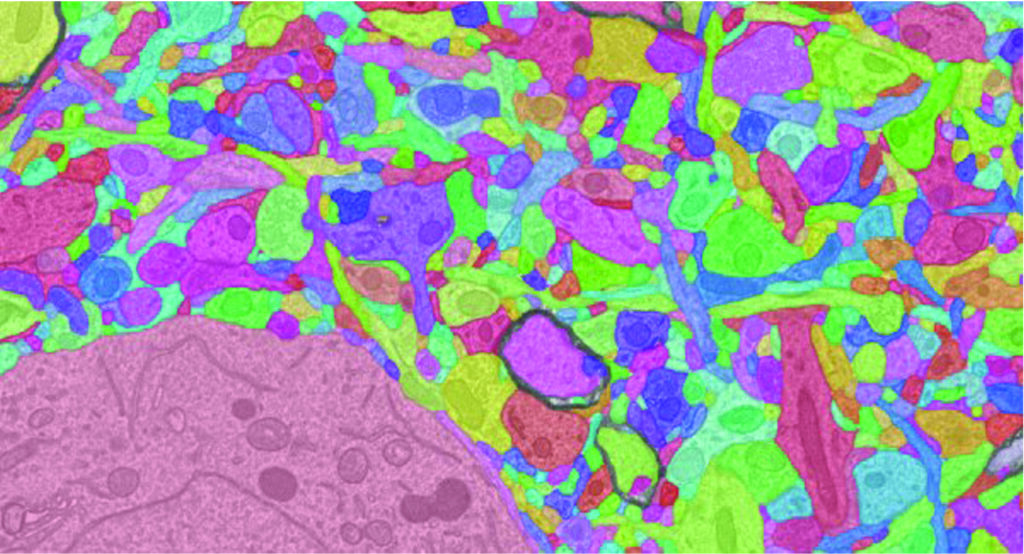
With its 86 billion neurons and more than 100 trillion connections, the human brain is sometimes described as the most complex object in the universe. It comes as little surprise, then, that treating disorders of the brain has proven frustratingly difficult. About a decade ago, the United States government accordingly launched the BRAIN (Brain Research Through Advancing Innovative Neurotechnologies) Initiative, an effort to catalog and decipher the brain’s intricacy.
A significant challenge has been correlating the massive amounts of data gathered by the BRAIN Initiative’s many independent research teams. Developing community standards to better enable this correlation and to guide revolutionary brain mapping via high-resolution imaging techniques is the goal of Will Gray-Roncal PhD ’16, a principal research scientist at the Johns Hopkins University Applied Physics Laboratory (APL) and an instructor in the Whiting School’s Engineering for Professionals and Lifelong Learning programs.
“In the research community, there are numerous really smart neuroscientists collaboratively collecting data,” says Gray-Roncal, “but they organize their experiments differently and approach research and collect data in slightly different ways.”
Gray-Roncal is the principal investigator for BENCHMARK (Big-data Electron-microscopy for Novel Community Hypotheses: Measuring And Retrieving Knowledge). Funded by a $1.3 million grant from the National Institutes of Health, BENCHMARK seeks to enable BRAIN Initiative researchers in the areas of electron microscopy and X-ray microtomography to share data and insights with the broader community.
BENCHMARK further supports loading voluminous imagery into a single, consistent public database called BossDB, which is maintained by APL. Pooling multi-institutional knowledge in this way enables scientists to vastly expand the scope of their queries and the reproducibility of their findings. That ability to dynamically peruse diverse datasets opens up new possibilities, for instance, in comparative connectomics, a hot-topic area where researchers explore neural wiring similarities between species.
“By seeing a common structure across, say, mouse, fly, and human experiments, we may arrive at profound insights about how biological brains work,” says Gray-Roncal.
Overall, BENCHMARK is making the BRAIN Initiative’s lofty objectives more achievable by democratizing access to the whole research community.
“I think of BENCHMARK as the mythical Tower of Babel in reverse, where instead of all of us speaking different languages, we all wind up speaking the same language,” says Gray-Roncal. “We’ll need this common language to process the deluge of data we’re seeing as we continue working on comprehending the brain.”




